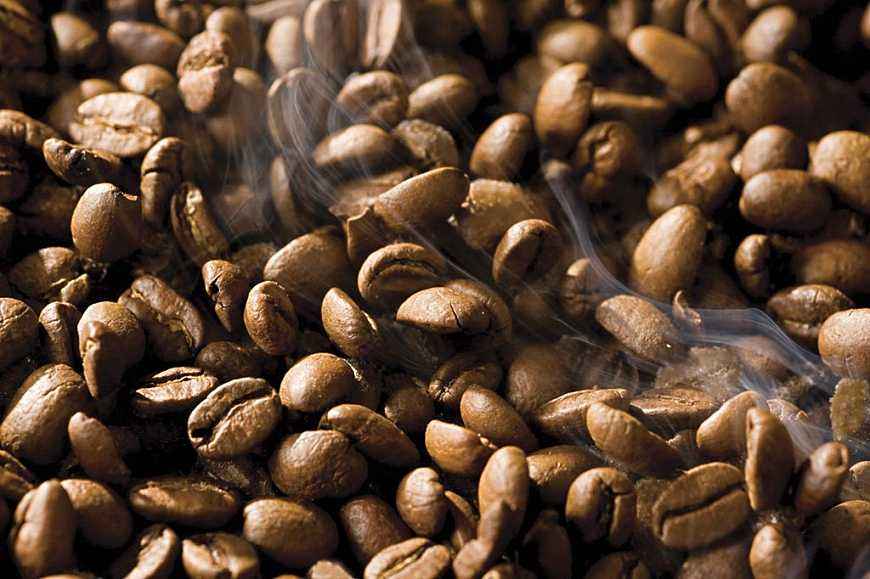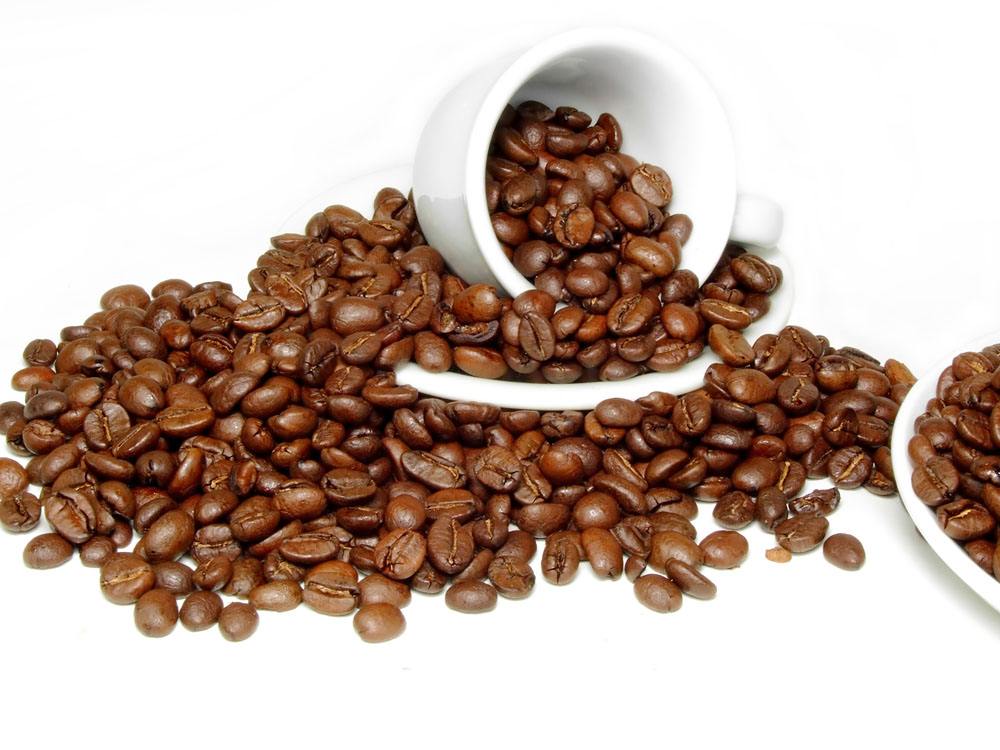Guatemala Antigua Flower God single bean coffee beans taste good? flavor description variety planting information

Professional barista communication, please pay attention to coffee workshop (Weixin Official Accounts cafe_style )
Why is coffee so good in Antigua, Guatemala?
Because Guatemala has a unique volcanic terrain and high altitude, where the terrain and soil environment uniquely create the coffee bean's unique flavor, Antigua is surrounded by three volcanoes.
Why is this coffee bean so special?
Guatemala Floral Coffee beans are produced in a well-known processing plant in Antigua, with technical guidance from a well-known coffee group brand, La Minita, from the selection of raw beans to strict management control, resulting in excellent and consistent quality.
Another reason is the fact that Guatemala retains more of the traditional Typica and Bourbon varieties of Arabica coffee trees than many other coffee-producing Latin American countries, a fact that contributes to the flavor of Guatemala Antigua coffee.
Why does Guatemala's Flora coffee taste so good?
From the smell of full aroma, sweet fragrance, to the mouth after the smooth balance, although slightly sour, but let people like that bright taste.
Flower God is produced by Las Pastores, a processing plant, the brand belongs to the Laminita Group, under the control of raw beans and cup testing by quality control personnel, establish a set of strict procedures from purchasing cherry fruit to washing, post-drying and drying, and of course, according to Laminita's famous strict selection procedures for raw beans! La Minita finally enjoys a certain reputation under the quality control requirements and supervision.
Flavor note: floral, alpine fir, tea, berry, cream, sweet lemon, caramel, sweet, floral, hazelnut chocolate, tea, almond, honey. The sweet and sour changes in the mouth are very delicate, with sweet chocolate and berry sweet and sour endings.
La Flor del Cafe, meaning coffee flower, is a coffee farm located in the volcanic region of Antigua, Guatemala, with instructions on growing and processing techniques provided by La Minita Estate in Costa Rica.
Antigua coffee has always been known for its "knife-like acidity". In addition to the bright acidity, the flower god emits fresh and elegant flowers after grinding, which is the origin of its "coffee flower" reputation.
Taste introduction and brewing suggestions:
Flower God is not only elegant name, when drinking the red wine emitted in the mouth acid delicate and pleasant, cool after chocolate and nut aroma.
The recommended roast is light or medium. During the first three days after baking, try to rinse the beans with a lower water temperature (below 84 degrees Celsius).
After cooking, wake up beans can gradually increase the brewing water temperature (88--90 degrees), so that the taste is more full, acidity and mellow feel more balanced.
Guatemala Guatemala
Population: 15,438,000
Guatemala has been more successful than most in defining its coffee focus areas and developing markets with very different marketing models. In my experience, coffee from this region has a consistent flavor profile, but there is no hard and fast way to specify this.
SAN MARCOS
San Marcos is both the warmest and wettest coffee-growing region in Guatemala. On the slopes facing the Pacific Ocean, the rainy season comes earlier, so flowering is earlier than usual. Rainfall has a large impact on post-harvest drying, so some farms mix sun and mechanical drying. Agriculture is the mainstay of the region's economy, and it also produces food, fruit, meat and wool.
Altitude: 1300--1800m
Harvest: December-March
Breeds: Bourbon, Caturra, Catuai
ACATENANGO
The coffee producing area of this region surrounds the Akatango Valley region, named after the volcano. In the past, many producers sold coffee to "coyotes," through which the fruit was exported to Antigua, where it was processed. This is because Antigua coffee enjoys a better reputation and can be sold at a higher price. This practice is less common now, since the Akatnam specialty coffee produces excellent coffee beans, and the increasingly widespread recognition that coffee beans in the region are not only profitable but traceable.
Altitude: 1,300- 2,000 m
Harvest: December-March
Breeds: Bourbon, Caturra, Catuai
ATITLAN
The coffee farms in Atitlan are situated around Lake Atitlan. Located at an elevation of 1500 meters (4900 feet), the lake has captured the hearts of writers and tourists for years because of its unparalleled beauty. Strong winds are common here in the late morning and early afternoon, and locals call them "xocol," meaning "wind that takes away sin." Here, a number of private nature reserves have been established to protect the biodiversity of the area and help prevent deforestation. Due to rising labor costs and competition for labor, coffee production is under pressure. Urban sprawl has also increased pressure on land use, with some farmers finding it more profitable to sell their land than to continue growing coffee.
COBAN
Before World War II, German coffee producers controlled the area, and Cobain took its name from this period of growth and prosperity. The dense rainforest climate pattern creates a very humid climate, which is a challenge for coffee drying. The area is difficult and expensive to transport due to its location, however, amazing coffee comes from the area.
Altitude: 1,300- 1,500 m
Harvest: December-March
Breeds: Bourbon, Maragogype, Catuai, Caturra, Pache
ANTIGUA
Antigua is probably the best-known coffee-producing region in Guatemala, as well as one of the best-known countries. The area is named "Antigua City" and has famous Spanish architecture and UNESCO World Heritage sites. In 2000, the coffee beans in Antigua received the name of origin as "genuine Antigua coffee" because the market was previously flooded with pirated coffee beans that devalued Antigua coffee beans. However, this has not completely stopped the production of pirated coffee beans from imported fruits and processed locally. Nevertheless, apart from the overpriced counterfeits, there are good quality coffee beans that can be traced back to Antigua and are worth pursuing.
Altitude: 1,500- 1,700 m
Harvest: January-March
Breeds: Bourbon, Catuai, Caturra
Antiqua Flora
Origin: Guatemala
Origin: Antiqua
Method of processing raw beans: washing
Roasting degree: medium baking degree
Flavor: Medium palate, smooth and supple, floral, slightly sour
Important Notice :
前街咖啡 FrontStreet Coffee has moved to new addredd:
FrontStreet Coffee Address: 315,Donghua East Road,GuangZhou
Tel:020 38364473
- Prev

Introduction and flavor description of G2 washed coffee in Sidamo, Ethiopia
Following Kaipai (Wechat official account vdailycom) found that Beautiful Cafe opened a small shop of its own. The world-famous Great Rift Valley of East Africa has long been known as the birthplace of mankind, but also recognized as the birthplace of coffee. The Sidamo region of Ethiopia happens to be located in this lush and mysterious canyon. As the birthplace of coffee, Ethiopian coffee has orders
- Next

Characteristics of Burundian Coffee, introduction to Burundi
Following Kaibei (official Wechat account vdailycom) found that Beautiful Cafe opened a small shop of its own. Burundi is an agricultural and animal husbandry country and one of the least developed countries in the world declared by the United Nations. The difficulty of its economic development lies in its small country, large population, poor resources and no access to the sea. In 1991, the Government of Burundi signed the third phase with the International Monetary Fund (1991-1994).
Related
- Detailed explanation of Jadeite planting Land in Panamanian Jadeite Manor introduction to the grading system of Jadeite competitive bidding, Red bid, Green bid and Rose Summer
- Story of Coffee planting in Brenka region of Costa Rica Stonehenge Manor anaerobic heavy honey treatment of flavor mouth
- What's on the barrel of Blue Mountain Coffee beans?
- Can American coffee also pull flowers? How to use hot American style to pull out a good-looking pattern?
- Can you make a cold extract with coffee beans? What is the right proportion for cold-extracted coffee formula?
- Indonesian PWN Gold Mandrine Coffee Origin Features Flavor How to Chong? Mandolin coffee is American.
- A brief introduction to the flavor characteristics of Brazilian yellow bourbon coffee beans
- What is the effect of different water quality on the flavor of cold-extracted coffee? What kind of water is best for brewing coffee?
- Why do you think of Rose Summer whenever you mention Panamanian coffee?
- Introduction to the characteristics of authentic blue mountain coffee bean producing areas? What is the CIB Coffee Authority in Jamaica?

